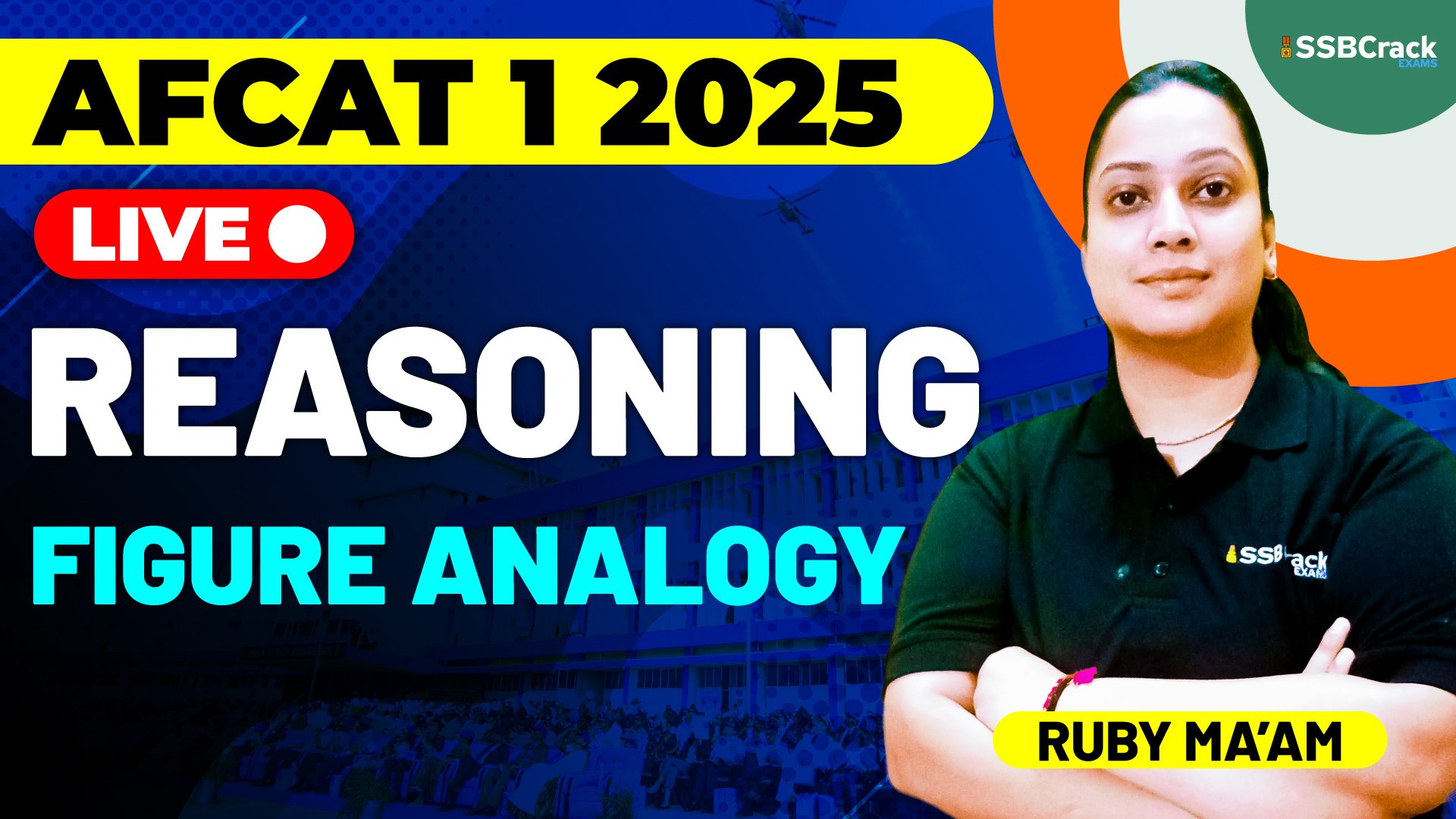Air Force Common Admission Test (AFCAT) is one of the most competitive exams for those aspiring to join the Indian Air Force. AFCAT evaluates candidates on multiple aspects, including verbal ability, numerical ability, reasoning, and general awareness. Among the reasoning section, figure analogy plays a pivotal role in assessing a candidate’s cognitive ability, logical thinking, and problem-solving skills.
What is Figure Analogy?
Figure analogy questions are based on identifying relationships between pairs of figures or patterns. Similar to verbal analogy questions (like A is to B as C is to D), figure analogy deals with visual relationships. Candidates are presented with a sequence of figures, and their task is to deduce the relationship between them and choose the correct figure that completes the analogy.
For example:
- Question: Figure A is to Figure B as Figure C is to ?
- Candidates have to examine the changes in shapes, rotations, flips, or the addition and removal of elements in the figures and apply the same logic to Figure C to select the appropriate answer.
Why is Figure Analogy Important in AFCAT?
- Test of Logical Thinking: Figure analogy tests the ability to understand the underlying logic or pattern in the figures. Being able to think logically and recognize patterns quickly is a critical skill not only for cracking the AFCAT exam but also in problem-solving situations in real-life scenarios, which are essential for Air Force officers.
- Non-Verbal Reasoning Skills: The nature of figure analogy questions does not depend on language skills. They test non-verbal reasoning, which is universal. This section allows candidates to demonstrate their abstract thinking and ability to work with visual information—a key ability in interpreting maps, charts, and tactical information.
- Time Management: AFCAT is a timed exam, and figure analogy questions, when practiced well, can be solved relatively quickly. With practice, candidates can develop the speed to analyze and answer figure analogy questions within seconds, freeing up time for more complex numerical or verbal sections. Efficient time management is crucial for clearing the AFCAT exam with a high score.
- Enhances Analytical Skills: Figure analogy questions train your mind to analyze situations from various perspectives. Whether it is detecting symmetry, identifying geometric transformations (rotation, reflection, etc.), or recognizing patterns, the process builds sharp analytical skills. This analytical thinking is directly applicable to real-time decision-making in the Air Force.
- Boosts Cognitive Development: Regular practice of figure analogy questions enhances cognitive flexibility, which is the ability to switch between different concepts or thought processes. This cognitive development is essential in an Air Force environment where adaptability and quick decision-making in unpredictable situations are crucial.
- Weightage in Exam: Reasoning sections, including figure analogy, carry significant weightage in AFCAT. It is often a scoring section because once the underlying pattern is detected, answering becomes straightforward. Since there is no complex computation involved, it offers a high opportunity for accuracy.
Tips for Tackling Figure Analogy in AFCAT
- Practice Different Types of Patterns: Get familiar with various types of figure analogy questions. Some common types include changes in the number of elements, rotation of shapes, mirror images, size transformations, and movements in direction. The more patterns you practice, the easier it will be to spot them during the exam.
- Visualize the Problem: Instead of just looking at the figures, try to visualize the movement or transformation happening between them. For instance, if a figure is rotated, mentally rotate the shape to see how it changes.
- Time-Bound Practice: Since AFCAT is a timed exam, it’s essential to practice figure analogy questions under timed conditions. Allocate specific time limits during practice sessions and try to improve your speed without sacrificing accuracy.
- Focus on Elimination: In multiple-choice questions, if you are unsure of the answer, use the process of elimination. Analyze each option and discard the ones that don’t fit the logical pattern. This method often leads you to the correct answer when you’re unsure.
- Strengthen Spatial Ability: Develop your spatial awareness by practicing puzzles that require mental rotation, reflection, and pattern recognition. Games like Sudoku, jigsaw puzzles, or apps designed for brain training can help improve your visual-spatial skills.
Conclusion
Figure analogy is more than just a section in the AFCAT exam—it’s a reflection of your reasoning ability, pattern recognition skills, and mental agility. By focusing on this area, AFCAT aspirants can strengthen their cognitive skills, enhance time management, and significantly boost their exam performance. With consistent practice and strategic thinking, figure analogy can become one of the easiest and most scoring sections in the AFCAT. Keep practicing, stay focused, and approach the exam with confidence!

















